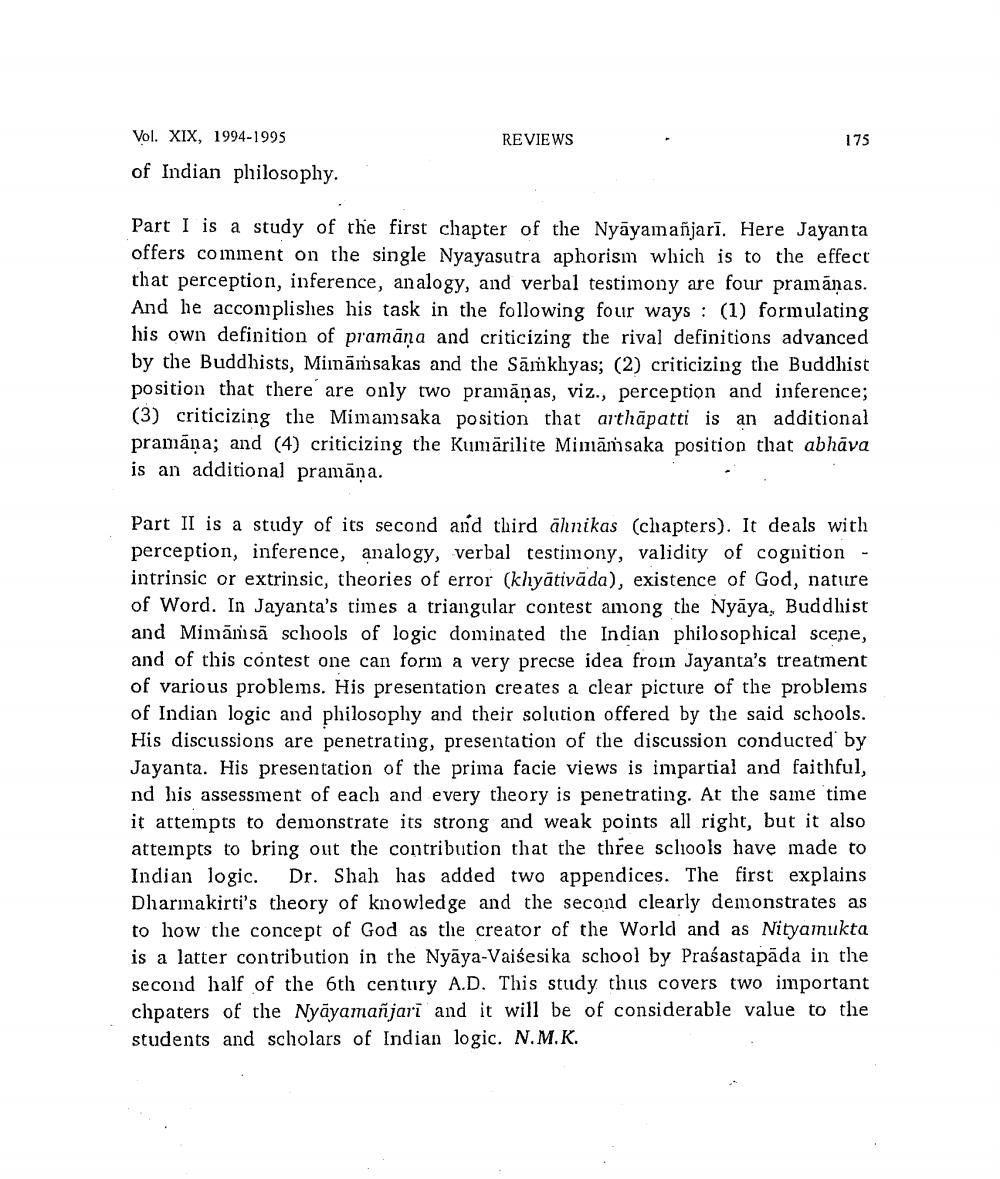________________
REVIEWS
175
Vol. XIX, 1994-1995 of Indian philosophy.
Part I is a study of the first chapter of the Nyāyamañjarī. Here Jayanta offers comment on the single Nyayasutra aphorism which is to the effect that perception, inference, analogy, and verbal testimony are four pramānas. And he accomplishes his task in the following four ways: (1) formulating his own definition of pramāna and criticizing the rival definitions advanced by the Buddhists, Miināmsakas and the Sāmkliyas; (2) criticizing the Buddhist position that there are only two pramānas, viz., perception and inference; (3) criticizing the Mimamsaka position that arthāpatti is an additional pramāņa; and (4) criticizing the Kumārilite Mimāmsaka position that abhāva is an additional pramāna.
Part II is a study of its second and third āhnikas (chapters). It deals with perception, inference, analogy, verbal testimony, validity of cognition - intrinsic or extrinsic, theories of error (khyātivāda), existence of God, nature of Word. In Jayanta's times a triangular contest among the Nyāya, Buddhist and Mimāṁsā schools of logic dominated the Indian philosophical scene, and of this contest one can form a very precse idea froin Jayanta's treatment of various problems. His presentation creates a clear picture of the problems of Indian logic and philosophy and their solution offered by the said schools. His discussions are penetrating, presentation of the discussion conducted by Jayanta. His presentation of the prima facie views is impartial and faithful, nd his assessment of each and every theory is penetrating. At the same time it attempts to demonstrate its strong and weak points all right, but it also attempts to bring out the contribution that the three scliools have made to Indian logic. Dr. Shah has added two appendices. The first explains Dharmakirti's theory of knowledge and the second clearly demonstrates as to how the concept of God as the creator of the World and as Nityamukta is a latter contribution in the Nyāya-Vaisesi ka school by Praśastapäda in the second half of the 6th century A.D. This study thuis covers two important chpaters of the Nyāyamañjari and it will be of considerable value to the students and scholars of Indian logic. N.M.K.




